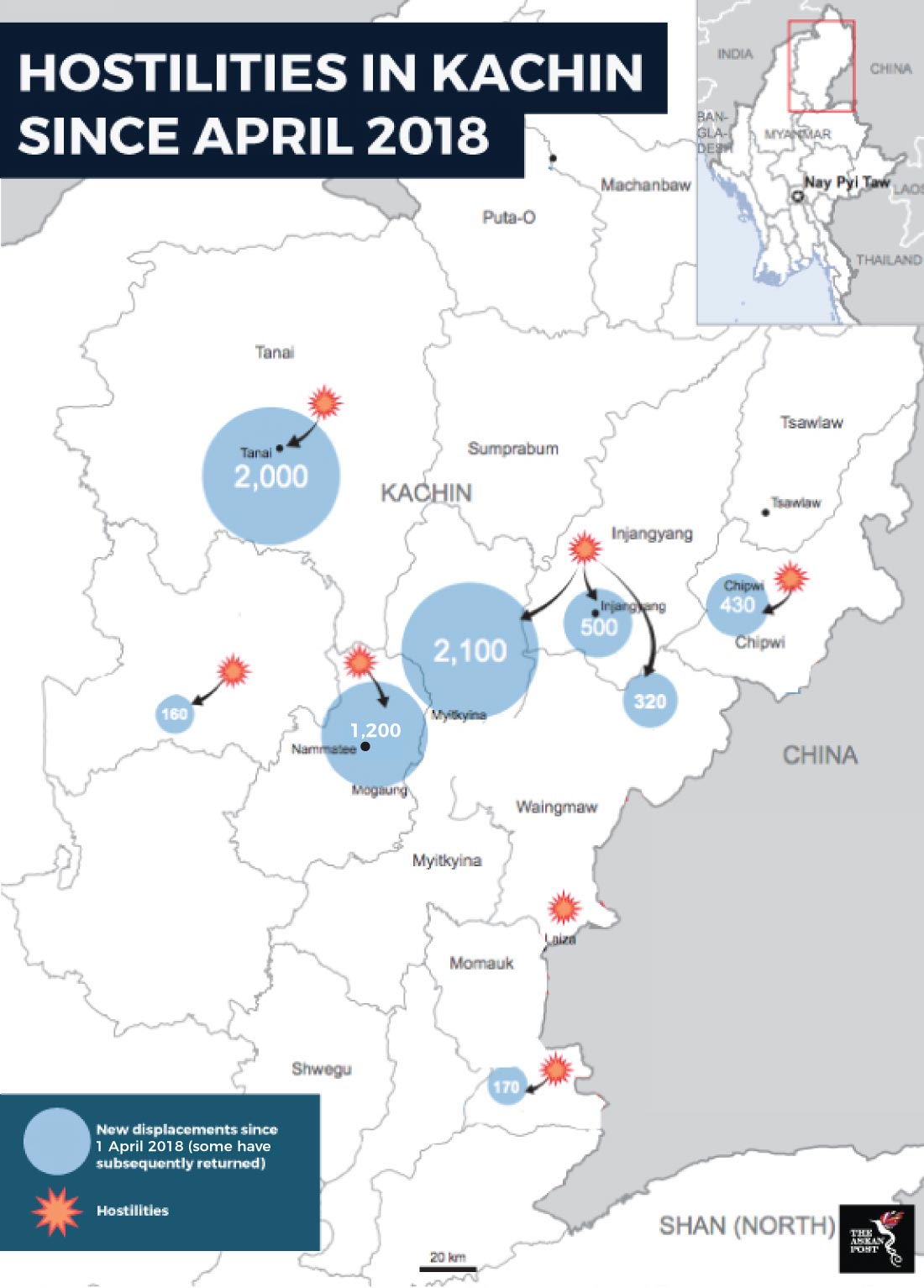The Rohingya crisis receives most of the global media’s attention currently due to the scale and magnitude of the humanitarian crisis that is unfolding there and rightly so. However, there is another deadly ongoing conflict in Myanmar.
This conflict is between the Kachin Independence Army (KIA) and the government of Myanmar and has often been dubbed “the forgotten war” for that very reason.
Ever since a government ceasefire between the two sides broke down in 2011, fighting between the Myanmar Armed Forces (also known as the Tatmadaw) and the KIA has escalated. This year has seen a dramatic spike in violence, with over 10,000 people displaced from the Kachin state since January.
The Tatmadaw has come under criticism for using disproportionate violence against the Kachin state. The military have reportedly carried out air strikes and used heavy weapons in civilian areas. The deployment of the 33rd Light Infantry to the northeastern state has also raised concerns among human rights activists. The infantry is the notorious army unit accused of various human rights abuses against the Rohingya in the Rakhine state. Their deployment in Kachin, does not bode well for the safety of civilians there.
In light of the severity of the conflict, the United Nations (UN) has stepped in and called for an end to the violence there.
“Civilians must never be subjected to violence during the course of conflict. All parties must take all necessary measures to ensure their safety and security,” said a UN press statement released earlier this month.
 Source: United Nations Office for the Coordination of Humanitarian Affairs
Source: United Nations Office for the Coordination of Humanitarian Affairs
History
To completely understand the reasons underpinning the conflict, one has to delve deeper into the history of Myanmar.
Kachin is a mountainous state located in the northernmost part of Myanmar, sharing a border with China. The Kachin people is an umbrella term used for the confederation of six ethnic groups who live in the Kachin state.
After Myanmar gained independence from the British in 1948, the Kachin people were promised equality and autonomy. However, in 1961, Prime Minister U Nu declared Buddhism as the state religion which alienated the largely Christian population of the Kachin state. In the same year, the KIA was founded to struggle for self-determination and independence for the state. Relations between the government and the KIA deteriorated when the military seized control of the Myanmar government in 1962. The KIA has been fighting for independence ever since.
A ceasefire was implemented in 1994 but ended in 2011 after the Tatmadaw broke the existing agreement and attacked KIA forces.
Jade-rich Kachin
To simplify this war to just another of Myanmar’s many ethnic conflicts, however, would be too reductive. The Kachin state is known to be rich with jade deposits which contributes a substantial amount of revenue to the Myanmar economy. The jade gemstone industry in Myanmar is said to be worth US$31 billion. This has led to the suggestion that Myanmar refuses to allow complete autonomy for the Kachin state because the government wants to maintain direct access to the abundant resources there. Some experts have even named the conflict a war over natural resources.
Resolution
When Aung San Suu Kyi was first released, many had high hopes that she could solve the conflict. However, similar to the situation in the Rakhine state, things have escalated further. The conflict between the KIA and the Myanmar government has gone on for almost 60 years now and it seems like there is no end in sight. Even with international agencies stepping up and calling for an end to the violence, their concerns are predictably falling on deaf ears.
To resolve the conflict is not a difficult task. The Tatmadaw has to stop clamping down on minorities in Myanmar. The reason why ceasefire talks have failed with the KIA in the past is because the government wants them to lay down their arms. Given the track record of the military junta, the KIA can be forgiven for not trusting the government. For a real and meaningful ceasefire to last, the government there has to ensure the safety of the Kachin people and begin rebuilding trust with them. Only then would the KIA be willing to consider laying down their arms for a peaceful resolution to this unnecessary conflict.
Articles selected as Top Stories of 2018 are those that were the most popular among readers of The ASEAN Post for the month in question.
Related articles:
Repatriation will send Rohingyas back to danger
Myanmar crisis getting out of hand
